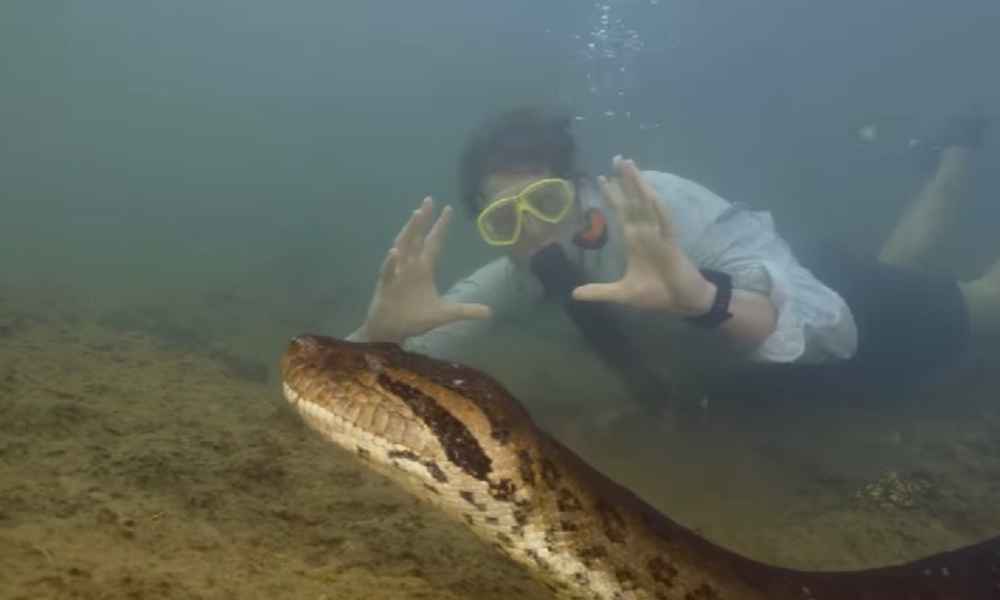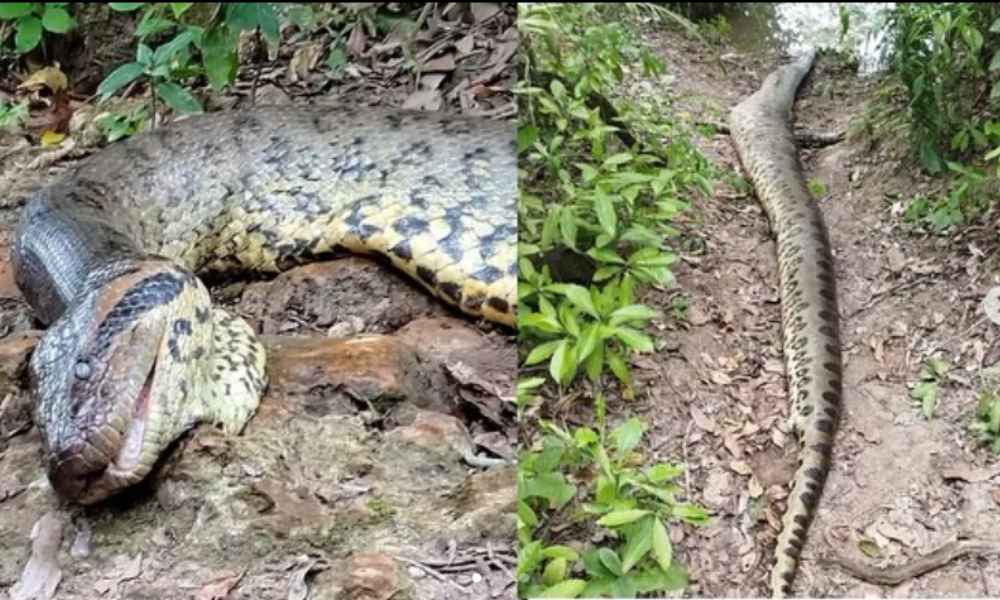Researchers recently discovered the world’s biggest snake in the Amazon rainforests. This surprising revelation is about Anacondas, known to be the heaviest and longest snakes in the world. Here, the researchers found a Green Anaconda. Anacondas live in South American rivers and wetlands.
They are known for their speed and ability to suffocate large prey before swallowing them. This article lets you learn about Anacondas, including what this research has yielded about the world’s largest snake.
Dr. Freek Vonk’s Experience
One of the scientists, Professor Freek Vonk, captured on video a giant 26-foot Green Anaconda, thought to be the world’s biggest snake. Vonk shared the awe-inspiring footage on Instagram, describing the anaconda as thick as a car tire, measuring 8 meters in length, and weighing over 200 kg, with a head comparable to his own. Expressing astonishment and admiration, Vonk mentioned the snake as a ‘Monster.’
Reflecting on the encounter, Vonk remarked that while he had discovered new species in the past, they were typically small snakes from Australia. However, encountering such a legendary creature was a special moment in his scientific career. He exclaimed, underlining the immense importance of encountering such a creature in the heart of the Amazon, a region he holds dear as home.
Insights from Dr. Bryan Fry
Dr. Bryan Fry, from the University of Queensland, shared fascinating insights into the incredible size of these majestic creatures. He recounted encounters with female Anacondas reaching an astonishing length of 6.3 meters. Additionally, he also mentioned that according to the Waorani people’s reports, even larger specimens exist, surpassing 7.5 meters in length and weighing approximately 500 kilograms.
Description of the New Anaconda
Before this discovery, researchers recognized four species of Anacondas. The Green Anaconda was the largest among them, typically inhabiting tropical regions of South America, including the Amazon, Orinoco, and Essequibo river basins and smaller watersheds.
Research Findings
There are two species of Green Anacondas. Named Southern Green Anaconda and Northern Green Anaconda. These formidable snakes primarily prey on caimans, capybaras, deer, and tapirs, among other animals. They employ a lethal hunting technique by encircling their victims with their bodies and then suffocating them through constriction. Remarkably, Green Anacondas are adept at hunting underwater, demonstrating their exceptional adaptability and predatory prowess.
Anacondas are known for their impressive speed and ability to catch prey easily. They squeeze and eat them whole. Traditionally, the Amazon was believed to be home to just one type of Green Anaconda, also called the Giant Anaconda. Also, Mr. Vonk’s team, with 14 scientists from nine countries, found the northern Green Anaconda to be different from the south Green Anaconda.
Published in the journal Diversity, the study revealed that this new species diverged from the southern Green Anaconda around 10 million years ago, exhibiting a genetic difference of 5.5 percent. Bryan Fry, the expedition’s leader and a biologist at the University of Queensland, compared this genetic variance to the difference between humans and chimpanzees, emphasizing its significance. Researchers highlight the importance of this discovery for Anaconda conservation efforts, recognizing these apex predators as vital for ecosystem balance.
How Anacondas Hunt
They use their powerful jaws to grasp their prey and use their muscular bodies to compress and suffocate the prey before it is eaten whole. Like many other snakes, they can displace their jaws, allowing them to swallow large prey. However, they can minimize the risk of injury when consuming large prey.
How They Survive
Green Anacondas have colors and patterns that help them hide in water plants. They’re good at swimming because their eyes and nose are on their heads. The habitat of the Anaconda spans several South American countries situated to the east of the Andes, including Colombia, Venezuela, the Guianas, Ecuador, Peru, Bolivia, Brazil, and even the island of Trinidad.
Preferring a semi-aquatic lifestyle, these snakes spend most of their time in or near water, with some even opting to give birth in aquatic environments. They tend to favor slow-moving or stagnant waters over fast-flowing streams, typically inhabiting areas at lower elevations.
Protecting Anacondas
Individuals can contribute through ecotourism and awareness campaigns to safeguard the anaconda from extinction. Practicing ecotourism involves advocating for the environment during travels and supporting environmental organizations. Additionally, refraining from purchasing products made from Anaconda body parts helps in conservation efforts.
While Anacondas aren’t currently endangered, preserving their habitat remains crucial. People are working to help Anacondas live longer. They can live up to 20 years in places like the Smithsonian’s National Zoo and Conservation Biology Institute.
Conclusion
In conclusion, the discovery of the world’s biggest snake, the Green Anaconda, sheds light on the incredible diversity of life in the Amazon. Scientists like Dr. Freek Vonk and Dr. Bryan Fry provide valuable insights into these majestic creatures, highlighting the importance of their conservation. By understanding their habits and habitat, we can take steps to protect them and ensure their survival for future generations. Through ecotourism and awareness campaigns, we can all play a part in safeguarding the anaconda and preserving the rich biodiversity of the Amazon rainforests.
Also read,










